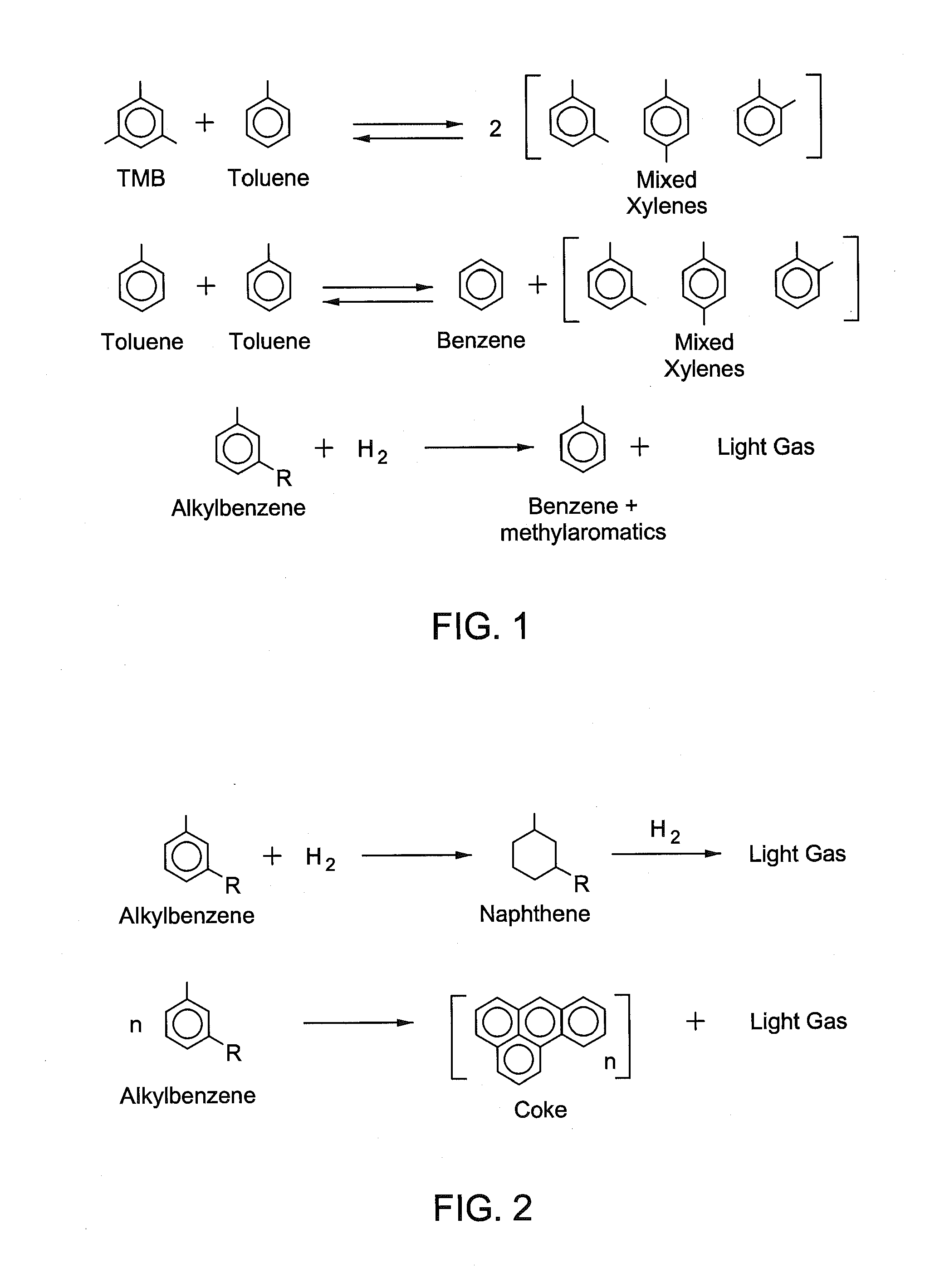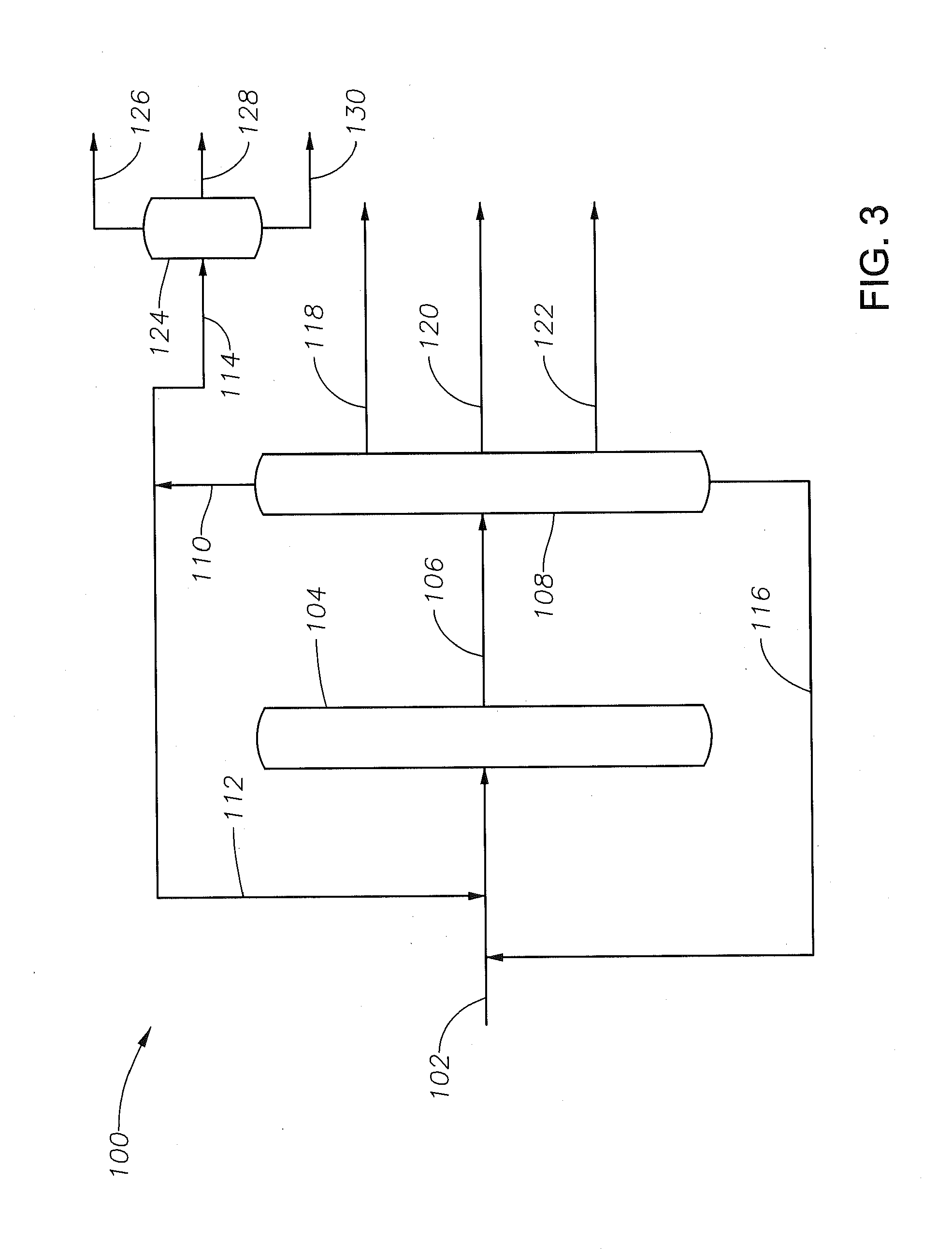Process for the Production of Xylenes and Light Olefins from Heavy Aromatics
a technology of heavy aromatics and xylenes, which is applied in the direction of hydrocarbon preparation catalysts, physical/chemical process catalysts, bulk chemical production, etc., can solve the problem of not being able to blend heavy reformate into gasolin
- Summary
- Abstract
- Description
- Claims
- Application Information
AI Technical Summary
Benefits of technology
Problems solved by technology
Method used
Image
Examples
example 1
Preparation of the Catalyst
[0050]Beta zeolite (ammonium form, HSZ-940NHA, obtained from Tosoh Chemical Corporation, Japan), having a SiO2 / Al2O3 molar ratio of 37, BET surface area of 570 squared meters per gram (m2 / g), a mean particle size 6 microns and a nominal content of Na2O 0.05% by weight was used in the catalyst preparation. The Beta zeolite was stirred with nickel nitrate hexahydrate aqueous solution to ion-exchange nickel, and the solid that was obtained was dried and impregnated with platinum chloride aqueous solution to produce Ni-Beta-Pt according to the following procedure: Nickel nitrate hexahydrate, Ni(NO3)2.6H2O, was dissolved in distilled water to produce 200 milliliters (mL) of 10% by weight solution. Thirty g of uncalcined Beta zeolite was added to this solution and stirred continuously for 1 hour, then filtered, and finally washed two times to remove the nitrate ions. The resulting solid was dried at room temperature for 2 hours, and then oven dried at 120° C., f...
example 2
Testing of Catalyst of Example 1.
[0051]The catalyst of the Example 1 was tested for transalkylation reaction in a bench top reaction system using heavy reformate to test the effectiveness of the catalyst for C9 conversion and products selectivity. The testing method consisted of loading a vertical reactor with 2.0 mL of the catalyst extrudates in the middle of reactor together with the inert alumina balls in the lower and upper parts of the reactor. The total volume of the reactor was 5 mL. The catalyst was activated and reduced under a flow of pure hydrogen at 50 ml / minute gas and was maintained at a temperature of 400° C. for 2 hours. Then, the reactor temperature was reduced to 340° C. and 20 bar pressure and the heavy reformate was supplied at a rate of 4.8 mL / h. The composition of heavy reformate is provided in Table 6. The reaction was run 3 hours at this temperature before collecting the sample. The reaction product was then directly injected into an on-line gas chromatograph...
PUM
| Property | Measurement | Unit |
|---|---|---|
| temperature | aaaaa | aaaaa |
| pressure | aaaaa | aaaaa |
| temperature | aaaaa | aaaaa |
Abstract
Description
Claims
Application Information
 Login to View More
Login to View More - R&D
- Intellectual Property
- Life Sciences
- Materials
- Tech Scout
- Unparalleled Data Quality
- Higher Quality Content
- 60% Fewer Hallucinations
Browse by: Latest US Patents, China's latest patents, Technical Efficacy Thesaurus, Application Domain, Technology Topic, Popular Technical Reports.
© 2025 PatSnap. All rights reserved.Legal|Privacy policy|Modern Slavery Act Transparency Statement|Sitemap|About US| Contact US: help@patsnap.com


